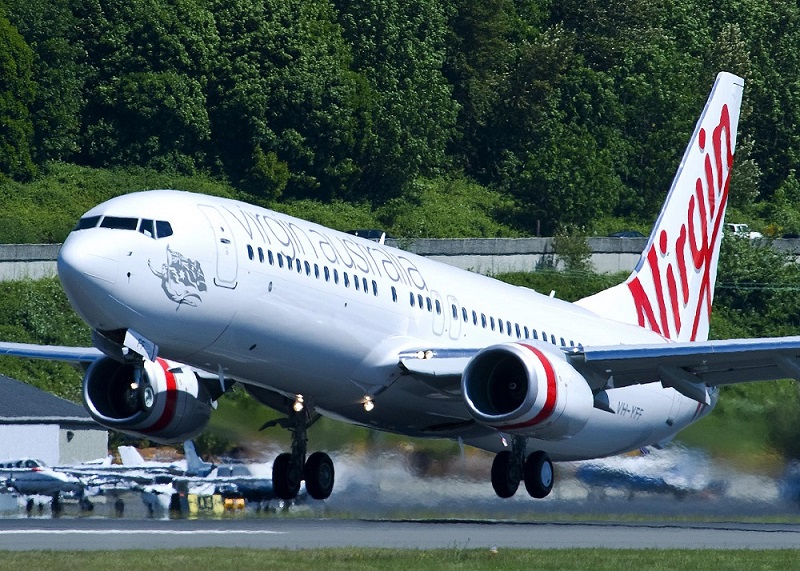A Virgin Australia International crew had to apply hard manual braking and use extended reverse thrust to halt an aircraft just 5m from the end of a runway after misreading wet conditions as damp.
The Boeing 737 was landing a Christchurch’s shorter Runway 29 in May 2015, using autobrakes, speedbrakes and reverse thrust. It initially achieved and occasionally exceeded its target deceleration rate.
“However, after crossing the runway intersection, the aircraft did not continue to decelerate as expected and the crew believed the aircraft appeared to slide or skid,’’ a report released Tuesday by the Australian Transport Safety Board said.
“In response, the crew overrode the autobrakes and applied hard manual braking while retaining full reverse thrust for longer than used in normal operations.
“The crew also corrected a minor directional deviation. The aircraft came to a stop about 5 m from the runway end. There were nil recorded injuries or aircraft damage.”
The report found the crew’s action, combined with initial autobraking above the required deceleration rate, probably prevented a runway overrun.
READ Virgin adds 27,000 seats to Gold Coast.
It said surface conditions on the later part of the runway had likely degraded to the extent it adversely affected the aircraft’s braking capability and it was also possible it aquaplaned.
Investigators also pointed to a number of factors leading to the crew’s determination the runway was damp instead of wet.
They noted the pilots were under a high workload after being informed of a change in runway and weather deviations.
This meant they missed a broadcast by air traffic control about the wet runway and did not have time to listen to automatic terminal information reports indicating it was raining.
Virgin had also recently changed its policy to treat a damp runway the same as a dry runway when previously it had treated damp runways as wet.
The revised definition combined with the misunderstanding about conditions led the crew to determine they could land on Runway 29.
Had they decided the runway was wet or had Virgin’s older policy still been in effect, the report said, the crew would have used wet instead of dry landing performance data and determined a safe landing was not possible.
“This would have likely resulted in the crew seeking an alternative landing solution such as changing runways (if available), holding to burn off fuel or diverting to another airport,’’ it said.
Safety issues identified by the report included the Virgin change in damp runway policy and the fact there was no regulatory direction from the Civil Aviation Safety Authority on how a damp runway should be considered for aircraft landing performance.
Virgin also did not have a policy requiring crews to independently cross-check environmental information and landing performance in-flight — something investigators said removed an opportunity for crew to detect errors.
The report also questioned whether the inflight landing distance safety margin of 15 percent was adequate in some conditions.
The Australian airline subsequently issued an operational notice that Runway 29 was not to be used when it was wet or damp but this was subsequently removed once the runway was grooved.
It incorporated landing calculations techniques into recurrent simulator crew training and said it was in the process of having the 15 percent safety margin incorporated into landing distance charts.
























